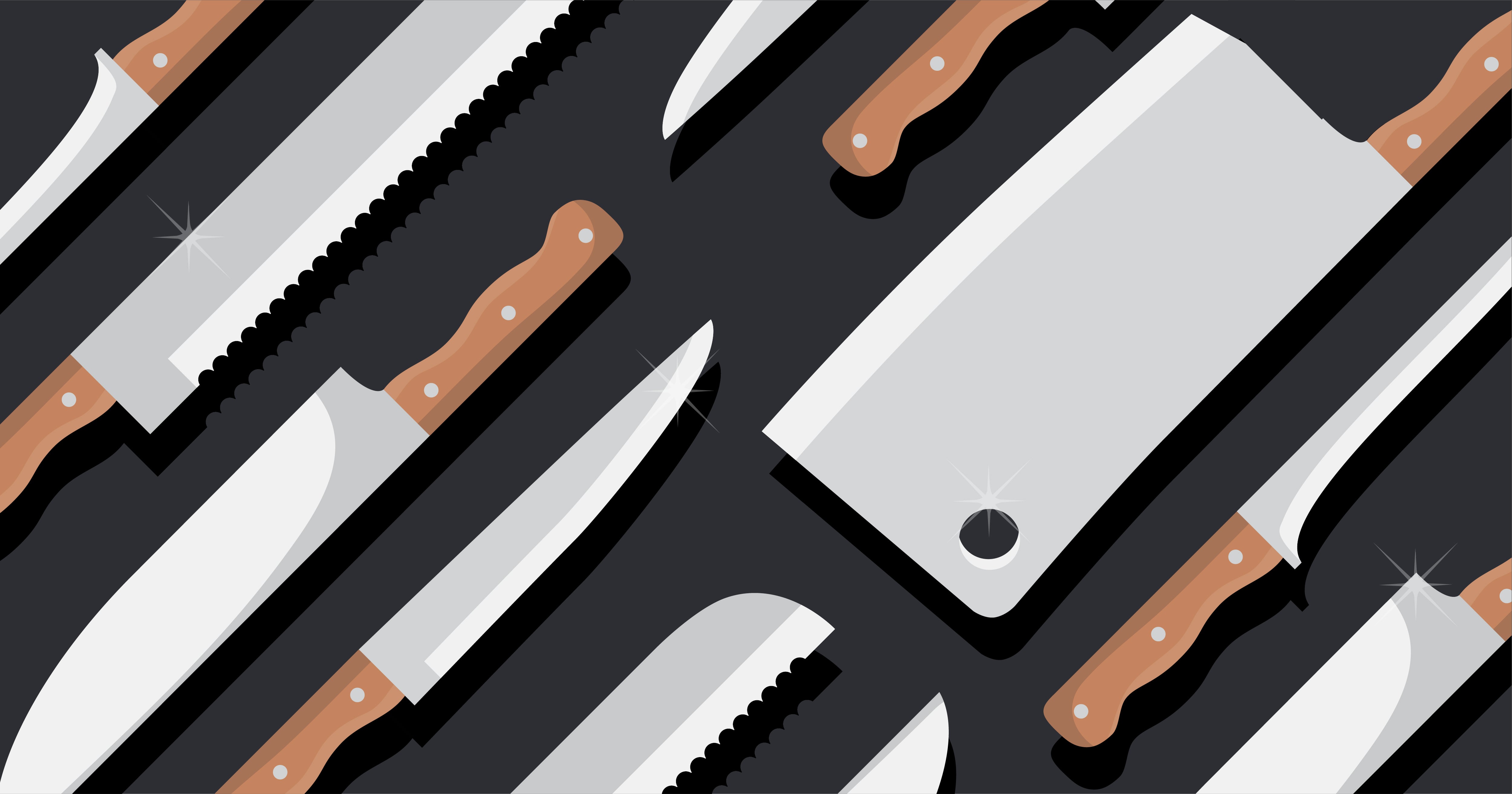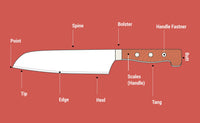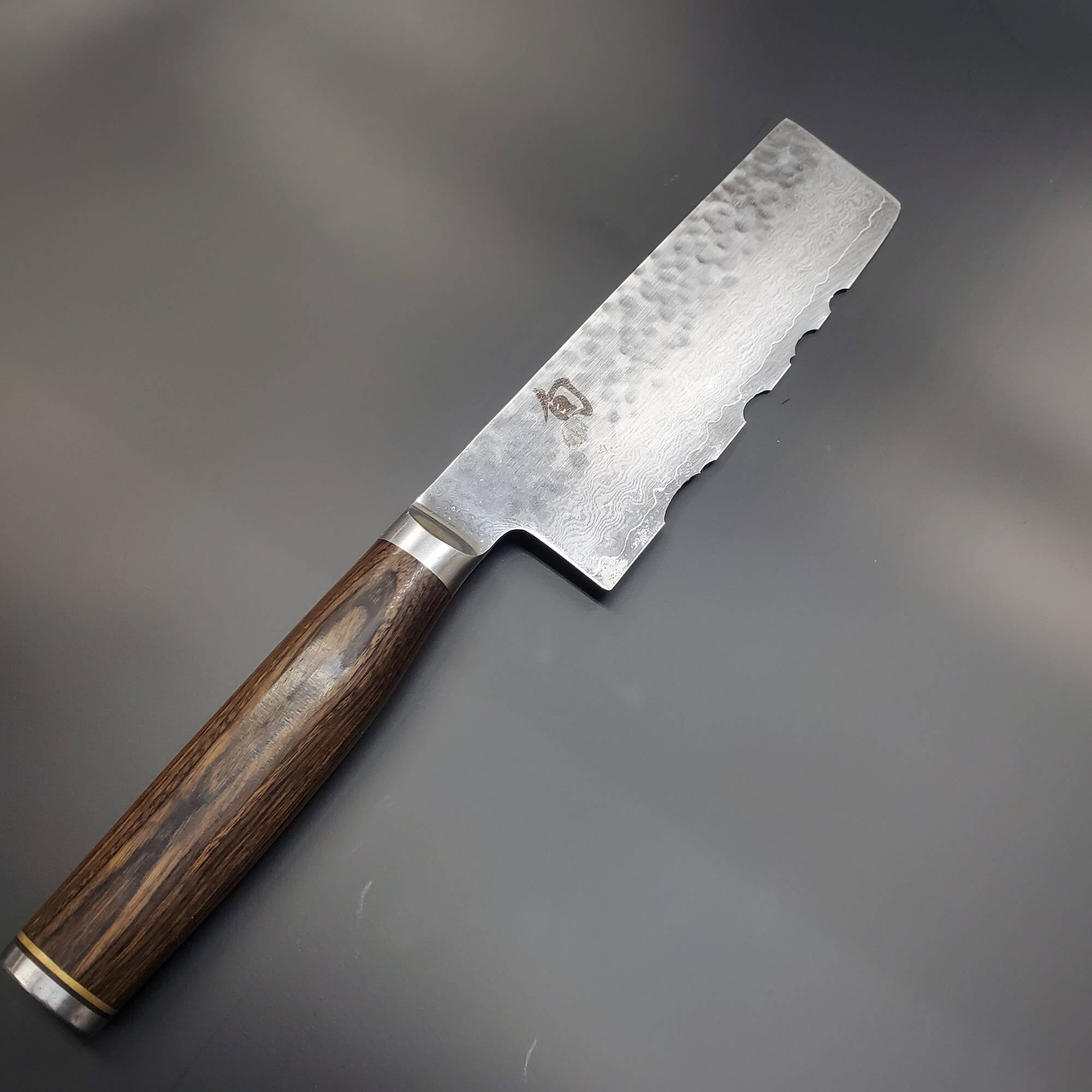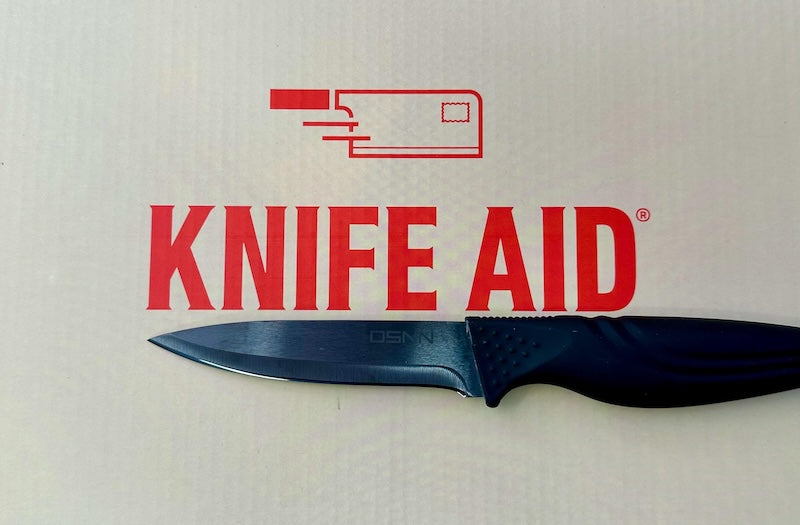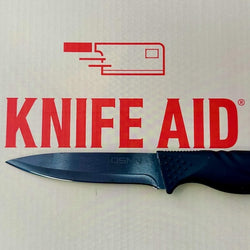The Knife Aid Knife Guide
Whether for chopping, cutting or carving, every kitchen needs a set of decent, sharp knives. We have put together a basic Knife Guide to help you make the most of your tools and decide if there is anything missing in your collection.

Paring knife: 3” to 4” is the most common blade size. A great all-rounder used for peeling, cleaning and slicing of small fruits and vegetables or hulling strawberries.
Utility knife: the blade is usually between 5” and 7” long. This is a versatile knife for the kitchen, used for peeling, chopping, slicing and carving of foods.

Chef’s knife: the blade is usually between 6” and 10” long. It is ideal for everyday use. Some say this is the most important knife in the kitchen. It is used in a rocking motion to prep, chop, dice and slice all types of foods.

Bread knife: most commonly, the blade is 8” long. The serrated blade makes it easy to cut through breads and foods with tough outer skin or crust. It is also the knife that stays sharp the longest on its own and can go longer intervals between each professional sharpening.
Carving knife: this blade is usually around 8” long. It is used to carve meats, fowl and roasts, as well as cutting larger fruits and vegetables.
Boning knife: usually, the blade is around 5” long. It is used for separating meat or fish from the bone. The sharp point of the sturdy, stiff blade makes it easier to be more precise than using a regular kitchen knife.

Meat cleaver: usually the balde is around 5” long and is thicker than in other knives. This heavy speciality knife lets you cut through the toughest bones and joints in meat. You can use the tip of the knife to cut through the flesh and the weight of the blade to break through any bones.
While we sharpen all of these knives, there are some blades we don't service. Please have a look at this page to find out what we do and don't sharpen.
